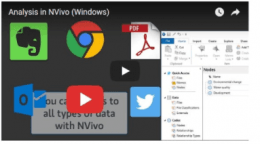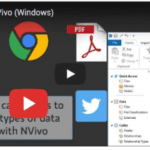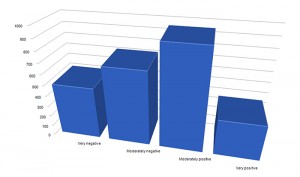“Advanced NVivo” is a follow-up presentation from the “Introduction to NVivo” offered earlier this term. This training will be held 1:30-3:30 p.m. Friday, April 15, online via Zoom.
This presentation will address the following:
- Any extant questions from the basic introduction of NVivo 12 Plus / NVivo
- How to set up qualitative data to be explored and queried
- How to use the software on interview, survey, focus group, and similar data
- How to query the collected data in an NVivo project (word frequency counts, text searches, matrix coding queries, matrix queries, proximity text searches, and other forms of text parsing)
- How to create data visualizations (word trees, word clouds, dendrograms, ring lattice graphs, sociograms, and others) (for analysis and presentations)
- How to conduct four types of auto-coding (by extracted themes and subthemes, by sentiment analysis, by structured data, and by supervised machine learning based on existing human coding)
- How to set up a qualitative cross-tabulation analysis
- How to output a basic report (including a custom codebook)
The presenter will be using the Windows version of the software. Continue reading “Apr. 15: Advanced NVivo”

 “Advanced NVivo” is a follow-up presentation from the “Introduction to NVivo” offered earlier this term. This training will be held 1:30-3:30 p.m. Friday, Nov. 13,
“Advanced NVivo” is a follow-up presentation from the “Introduction to NVivo” offered earlier this term. This training will be held 1:30-3:30 p.m. Friday, Nov. 13, 